
Advertise on podcast: HOMESTEADucation
Rating
4.7 from
Country
This podcast has
44 episodes
Language
Publisher
Explicit
No
Date created
2021/11/02
Average duration
39 min.
Release period
41 days
Description
A podcast for those who are looking to slow down, return to their roots and feel more self-sufficient. Join Mandi Pickering of Wild Oak Farms, and Angela Ferraro-Fanning of Axe & Root Homestead in their new podcast HOMESTEADucation, created by homesteaders for homesteaders. This podcast will explore different facets of homesteading in detail including vegetable gardening, fruit orchard care, animal husbandry, and more. Follow us on Instagram: Angela @axeandroothomestead and Mandi @wildoakfarms
Podcast episodes
Check latest episodes from HOMESTEADucation podcast
The Truth About Peat Moss
2024/02/22
Peat moss is used for terrestrial plants both indoors and outdoors. It is spongy and holds enough water without being sopping wet, and is derived from digested Sphagnum moss, making it organic.
Most people say that peat is not a renewable resource and therefore should not be used. And it turns out…most people would be correct.
Really I think the confusion is peat moss vs. sphagnum moss
Peat moss usually has that texture that you imagine when you think of moss. It’s thin and bright green, sort of like turf. If you touched it or walked on it, you can expect it to be wet and squishy. It contains more water than sphagnum.
Sphagnum moss could be wet and squishy too, but it doesn’t resemble turf. Instead, it grows noticeable fibers.
Peat Moss and Sphagnum Moss are basically the same plant. Read that again. They are part of the same plant.
While both peat moss and sphagnum moss come from the same plant, the moss grows in different circumstances, the surface of the soil versus in the water, but it is still the same moss.
Peat moss and sphagnum moss are two sides of the same coin, so to speak. Depending on where the moss was growing determines how we refer to it once it’s packaged for sale to the public. I would guess most folks don’t know the difference.
Peat Moss will be banned, or the sale of peat, in EU in 2024.
Remember, peat forms very slowly in cool wetlands as sphagnum moss decays. The bogs are called "carbon sinks" due to the massive amounts of carbon they store—far more than trees. When peat moss is harvested, carbon dioxide is released, and carbon dioxide is a significant contributor to climate change. While some scientists view peat bogs as a possible aid in reversing climate change, the very increases in heat and drought brought about by climate change may destroy the bogs.
The industry says it harvests less than 2% of the existing supply each year and that this reasonably low collection amount keeps up with demand. But even though that doesn't sound like a lot, harvested areas can't recover quickly enough for peat to be considered a renewable resource. * this is everyones hang up
Additionally bogs are also known as carbon houses. I read that some data suggests that once a bog is harvested a little or a lot, it can take up to 40 years for carbon to stop being emitted.
SO this is why folks are saying that peat moss is contributing, or the harvesting of peat moss is contributing to global warming.
Carbon compounds regulate the Earth’s temperature. Carbon also provides us energy.
How is peat harvested?
Peat moss is harvested from bogs and fens around the world, but primarily in Canada and Russia. These water-logged bogs have taken carbon from the atmosphere and sequestered it for 10,000 to 12,000 years, according to Linda Brewer, soil scientist in the Department of Horticulture in OSU's College of Agricultural Sciences
INCREDIBLE article on Peat Moss and where some of the above information was sourced.
https://phys.org/news/2022-12-harvesting-peat-moss-contributes-climate.html
https://www.noaa.gov/education/resource-collections/climate/carbon-cycle
Chime in! Thoughts?
Find us on Socials
Angela @axeandroothomestead
Mandi @wildoakfarms
Cheers!
more
Emergencies on your Homestead / Then vs. Now / Does it make you Tough?
2024/01/24
Emergencies on your Homestead // Does this lifestyle make you tough?
Where you started vs now?
How have you changed? Have you changed? Advice for those starting out.
Join us as we sit down and have more of an overall conversation about the above.
It is important to reflect as the years go by, make changes, remember what didn't work and what does.
Here are a few stats that we talk about.
1in 5 Americans live in rural America- a non metropolitan area.
Mostly, Americans live roughly 10 miles from the nearest grocery store and major hospital. However that does vary from state to state with some being far more drastic (100 miles) and some much closer (2 miles)
Grocery store distance median is 7 miles
What do you think about the perception that farmers/homesteaders don’t care for their animals? What is your take on this given you don’t consume meat.
It was a good one. Thank you for listening!
As always find us on socials for more!
Angela @axeandroothomestead
Mandi @wildoakfarms
more
Natives, Growing Zones, Microclimates
2024/01/17
Season 5: Episode 3 / Natives, Growing Zones, Microclimates
What is a native species?
According to US Forest Service:
“Native plants are the indigenous terrestrial and aquatic species that have evolved and occur naturally in a particular region, ecosystem, and habitat. Species native to North America are generally recognized as those occurring on the continent prior to European settlement.”
What is an invasive species?
From US Forest Service:
“An "invasive species" is defined as a species that is
Non-native (or alien) to the ecosystem under consideration; and,Whose introduction causes or is likely to cause economic or environmental harm or harm to human health. (Executive Order 13112).”Why are invasive species considered bad?
According ot US Forest Service: “Invasive species have contributed to the decline of 42% of U.S. endangered and threatened species, and for 18% of U.S. endangered or threatened species, invasives are the main cause of their decline.”
Source: https://www.fs.usda.gov/wildflowers/invasives/index.shtml
Invasive species can out-compete native and exotics alike for sunlight, space, soil nutrients, and water. Because they are so successful to their aggressive root systems and ability to produce mass amounts of seed very quickly, they can take over agricultural spaces, forest and prairie lands, and reduce food/habitats that local wildlife depends on. These invasives can change the balance of the natural ecosystem.
*Bradford pear tree example
Are exotic or non-native plant choices bad?
This is the topic of much debate. It is the opinion of many permaculture practitioners to first look to natives so solve a particular challenge or provide food. If that option does not exist, exotics may be used so long as they are not considered invasive. What is a growing zone?
The US is divided into regions with regards to their last date of frost. The shorter your winter, the higher your going zone is. If you experience long winters with late last dates of frost, you’ll have a low growing zone number. US growing zones typically range from 3 in cold climates to 11 in hot climates. These regions and growing zone numbers help to determine which plants are best suited to your location.
USDA just updated growing zones across the country for 2024. Find your zone on the USDA Plant Zone Hardiness Map here: https://planthardiness.ars.usda.gov/
What is a microclimate?
A microclimate is a small portion of a garden, forest, or other growing space that has different temperature, humidity, air circulation, sunlight exposure, soil content, and/or moisture levels than other areas immediately surrounding it. This could be due to thermal mass from structures, changes in terrain, proximity to other larger plantings, etc.
Macroclimate: refers to the larger climate patterns of a region. For me I try to think about a large growing plot, like acres or miles of corn. This *can still be a microclimate in spots, spots that flood, spots that are shaded.
More examples are below.
Examples:
Growing differences on hillsides or hilltops vs. valleys on the same property
Growing differences under a maple tree vs. outside the maple tree
Growing differences created in within a few feet of an exterior wall of your home vs. 20 feet away
Think about this- maybe we should consider our microclimate more so than our actual growing zone. We know that this goes against everything we once read when we started our first garden. But hear me out. You can alter your specific
more
Deworming protocols: Yes or No?
2023/09/29
Season 5, Episode 2 / To Deworm or Not to Deworm
Permaculture Perspective
Employ Rotational Grazing methods to manage worm populations
Animals should have enough forage for 5-7 days, roughlyAnimals enter when grass forages reach 8-10” and legume forages reach 10-12”Never allow animals to graze the forage below 4”. This slows forage regrowth and encourages parasite ingestion otherwiseA full rotation supplies 21-28 days before animals re-enter the original paddockPasture rest and sunlight exposure are essential for regrowth, and dropping larvae egg countsEmploy Co-Species Grazing methods
Goats and sheep share parasites. Those species do not share with horses, cows, and birdsDifferent species eat different forages and forage portions, ensuring all forage is evenly grazedBirds are essential–they break apart manure piles looking for worms, insects, larvae, etc.Effects of Dewormer on Ecosystem
Dewormers are harmful to dung beetle populations which are an important part of ecosystemExcessive/unnecessary deworming builds resistance within animalsDeworming products can effect non-targeted worms once contact is made with the soil just as earthwormsALWAYS RUN FECAL COUNTS AT ANNUAL CHECK UPS! Learn Famacha scale for goats and sheep, interact with animals to detect any abnormalities, and walk your pastures to monitor forage heights and type!
Medically, if you take a listen the "different" viewpoints line up. Husbandry and medicine go hand in hand when it comes to parasite control and prevention.
Refugia is a confusing term that you may hear surrounding the topic of deworming and goats. Refugia essentially means (in this particular topic) the parasites that are in refuge from the drugs used to treat them. Similar to treating heavy shedders in a horse herd.
Resistance in this case is the genetic ability of parasites to survive treatment with an antiparasitic drug that was generally effective against those parasites in the past.
References:
Prevent Parasites Through Grazing Management
(Penn State Extension)
https://extension.psu.edu/prevent-parasites-through-grazing-management
Dewormer Resistance
(Cornell)
https://cals.cornell.edu/nys-4-h-animal-science-programs/livestock/goats/goat-educational-resources/dewormer-resistance
Social// Instagram:
Angela: @axeandroothomestead
Mandi: @wildoakfarms
*This is not professional veterinary advice, please always work with your trusted veterinarian.
more
We are BACK + Seasons in Homesteading
2023/09/22
After a long Summer break, Angela and Mandi are BACK!
Join us as we catch everyone up to speed, chat about "seasons" in homesteading. Maybe it is because we are seasoned? Real life conversation just like we are sitting down with you on your homestead.
Cheers to you all!
Find us on social channels!
Angela: @axeandroothomestead
Mandi: @wildoakfarms
more
Spring Crops: Getting your hands dirty now!
2023/03/02
Peas: Can be sown when soil temps are between 40 and 70 degrees Fahrenheit.
Shelling peas: for storage
Snap peas: fresh eating
Sweet peas: flowers, not edible
Sow ¼-½” deep in well draining soil. Keep moist through germination and while growing.
Trellis is required.
Peas have thigmotropism: the ability to feel with sense of touch
Radish: Can be sown when soil temps reach 40 degrees Fahrenheit.
Pay attention to radish size, depth, and soil needs when planting.
Grow very quickly!
Carrots: Very difficult to germinate
Seed tape vs. sowing seeds – heavily sow and thin if needed
Keep moist until sprouting (the board trick)
Growing temps of around 40 degrees are great for sweeter tasting carrots
Carrots require fluffy soil with good tilth. Rocks in soil make squiggly carrots.
Bok Choi/Pak Choi/Bok Choi:
Prefers temperatures between 55 and 70 degrees fahrenheit
Prone to flea beetles; use coffee grounds in soil at planting time
Keep moist and cool, provide shade cloth if needed
Beets and Turnips:
Sow typically a few weeks before last frost. Requires temperatures in 40s to germinate and sprout. Keep moist. Sow heavily and thin as needed. Greens and roots are edible. Pay attention to variety for root size–some will never reach larger than a golf ball!
Spinach:
Sow 6 weeks before last frost. Prefers cold temps! Excellent for direct sowing when soil is workable, though does well started in seed cells too.
Crop is ready in as little as 6 weeks from harvest.
Spring Onions:
Plant in cool weather, but only when nighttime temps no longer fall in the 20Fs. Plant no more than one inch deep in seed cells or when direct sowing to avoid root growth restriction. Sow heavily and thin as needed.
Strawberries:
Plant bare root crowns and mulch surrounding soil with straw as soon as the soil can be worked. Be sure to identify desired variety; everbearing or June-bearing.
Calendula:
Cold season herb. Flowers are medicinal. Can be grown in spring and fall.
Remember! Some of this might be applicable to you now or in a few weeks. Either way we hope we have encouraged you to get out in your gardens and start growing something beautiful.
Cheers.
Angela- @axeandroothomestead
Mandi- @wildoakfarms
more
Candid Chat About LGD
2023/02/08
This is likely one of many chats between the both of us about our Livestock Guardian dogs.
One of many.
Stay tuned for more to come! Cheers.
Angela @axeandroothomestead
Mandi @wildoakfarms
more
The Brassica Episode
2023/01/31
The brassica family includes cole crops, descendants of the mustard family and wild cabbages. This includes broccoli, cauliflower, romanesco, kale, brussels sprouts, cabbage, and collards.
(cabbage is actually a member of the mustard family- but we lump it into brassicas!)
Soil and Temperature
These crops prefer well drained soil, kept moist. The seeds require slight warmth to germinate at 65 degrees Fahrenheit or more, but prefer to grow in cool conditions. If grown in peak summer, and not provided with cooling shade, they’ll bolt. Bolting means going to seed, or sending up flower heads before a true crop is produced for harvest.
Tip: Know your growing environment! If your temperatures where you are seeding stay in the 60-70 range you may not need any bottom heat for germination. If you do use heat mats (and we do!) just remember to remove the trays when you have germination. Forgetting to do so can contribute to weak and leggy seedlings.
When to Sow and Transplant
Sow 6-8 weeks before last date of frost in seed trays. Direct sow when temperatures are warmer. Can be transplanted out three to two weeks before last frost date when left unprotected. If row cover or a hoop house is provided, can transplant into the garden much earlier.
Tip: Grow where you have NOT grown like crops in the past couple of years- this goes for the whole brassica family.
It is safe to generalize the statement that brassicas want a soil pH of about 6-7.
Tip: I have found over the years that crops like broccoli and cabbage enjoy a little “extra love” when the plants are in your garden and roughly 4-5 inches tall. We side dress with some well aged compost.
Growing and Harvesting
Harvest broccoli and cauliflower when heads reach roughly 5” across, variety dependent. To blanch cauliflower heads, tie the leaves residing directly below the head together above the crown. This will blanch the cauliflower for a whiter color. According to some folks, as brussels sprouts grow, leaves can be pruned off to allow more sunlight to reach the small cabbage heads along the stalk. This is said to increase sprout size. Cabbage should be harvested before the head splits, usually at around 6” in size (again variety dependent).
Kale
Note the kale experiment PerennialTroubleshooting: Any damage (usually pest related or rough handling when removing pests) to the central growing point can lead to a stunted or no head growth. The outer leaves will still grow so it may seem “okay” but they too will be tough and non-edible.
Perennial choices exist for brassicas:
Angela purchases her’s here:
https://plantingjustice.org/product-category/perennial-tree-kales-collards/
9 Star Broccoli (bushing growth habit and is white like cauliflower)Tree CollardsWalking Stick KaleDaubenton's KaleKosmik Perennial KalePests: Slugs, snails, cabbage moths
To deter cabbage moths, use row cover before moths appear throughout the growing season-
Companion planting broccoli with garlic, chives and nasturtium helps to deter cabbage moths. Plant thickly.Mulching the garden is great but leave a small bit of soil exposed around the stem of brassicas to avoid slug and snail accessTip: Spend 10 minutes a day with a morning tea or coffee and pick off any cabbage worms (small green worm like terrible creatures) and dispose. We also like to keep a butterfly net in garden storage to catch any you miss!
more
Dr. Temple Grandin
2023/01/20
We had the extreme honor of speaking with the incredible Dr. Temple Grandin today. She is not only a pioneer in the Agriculture industry as a whole, but an advocate for animal welfare and husbandry, and she has written over 60 scientific papers.
On today's podcast we discuss one of her latest published papers:
Grazing Cattle, Sheep, and Goats are Important Parts of a Sustainable Agriculture Future.
https://www.mdpi.com/2076-2615/12/16/2092
You all. She is brilliant. Even if you don't farm or homestead, her information is applicable to all. After all, we all live on the same planet Earth.
Enjoy!
Ps! Another incredible piece to this story is Temple wrote the forward to Angela's book - The Sustainable Homestead- which comes out March 28th, 2023!
https://a.co/d/0kCFOCV - Preorder her book here!
more
Growing Onions- Seeds/Sets/Started
2023/01/18
Starting onions from seed:
Onion seeds are tiny little black seeds. Go figure, they are like more than 50% of
other seeds.
They prefer to be planted in loose/fertile soil and or seed starting mix.
You *can start them right in the ground if you have a longer growing season, but
most gardeners that aren’t planting starts are starting seeds early in the year. Late-
Jan- Feb.
If you plant directly in your beds plant them an inch deep and keep rows at least 1
foot apart.
Onion plants have very shallow roots and throughout the season will require a
consistent watering plan or irrigation for best results.
A lot of folks plant start onion seeds indoors or in a greenhouse using a bunching
method. Where many seeds are planted in almost a broadcast method in a larger
pot. The seeds will grow and almost look like grass with tiny black specs on top.
When it comes time to transplant outdoors you lift the entire bunch and carefully
separate the individual seedlings. It seems tedious, but as long as your soil is fertile
and loose its not too bad.
Planting onion sets:
Be sure when you are sourcing them that you source from LOCAL places and or
know your grow zone and what onion varieties grow best. IE: short day and long
Day.
Long day vs Short day onions:
This is just referring refers to the approximate hours of daylight a variety of onion
will need in order to start developing the bulb. Short Day means about ten hours a
day, while long day means twelve hours or more. This is important to consider when
choosing for your zone.
pH desired: 5.5-6.5- more acidic if you can.
In general, onions are ready for harvest in 100 to 125 days from seed. If you planted
onion sets, expect to harvest in 60 to 80 days.
How many onions do you eat in a year?
Curing?
Storage?
Onions prefer 6-8 hours of sun per day.
Plan for a spot with access to plenty of moisture as onions are slow drinkers. They do well in damp soil but need drainage… soaking wet feet leads to rotting bulbs.
Know your zone and onion type. Long day onion varieties are generally best suited for zones 6 and lower and require 14-16 hours of daylight. Short day onions need about 10 hours per day and work for zones 7+. Day neutral onion varieties are pretty adaptable with about 12 hours of sunlight needed daily. Ideally suited for zones 5 and 6.
If you’re planning on storing onions over the winter, grow storage varieties suited for long term keeping. My favorites are Aisla Craig for short term storage and Stuttgarter, Yellow Sweet Spanish, Patterson, and Yellow of Parma for long term. I’m not really a red onion person so can’t speak to that as much. 😉
Seeds are slow germinating and can be started in January with transplanting in spring into the garden.
Leeks, chives, Egyptian walking onions, ramps, and welsh onions are all great varieties to add to your must try growing list! Most of these are perennials too.
Keep onions well weeded as they don’t like competitors.
Plan to grow onions alongside brassicas like broccoli, cauliflower, kale, and kohlrabi. They help to repel cabbage worms/moths with their strong scent when closely grown together. Greens, tomatoes and carrots are also good companions. So are fruit trees! Onions are great in guilds.
Never plant onions near peas or beans, peanuts or groundnut, nor asparagus. They stunt one another’s growth.
Harvest onions when they tell you to; their greens will usually fall over and begin to yellow. You can also see their papery sk
more
Homestead Myths
2023/01/03
HAPPY 2023!
We will admit, we recorded this right before the holidays and then the holidays happened. :)
We would like to welcome you to the New Year with a fun recording where we talk all about some of the common myths that circulate the homesteading community. Or just the community in general.
We both are very excited to bring you incredible content this year, but let's start with something fun! Cheers!
Angela & Mandi
@axeandroothomestead
@wildoakfarms
more
Homesteading/Homesteader Perception
2022/12/08
You'll have to listen. This is a good one.
Mandi asked on social media- "What does being a homesteader mean to you? Are you proud of it? Do you feel like you "fit in?"
The responses were all over the board. Some were terribly sad. Some made sense to us. Some were very extreme.
We talked about many of them and gave our own thoughts in this episode.
No matter where you stand. If you are in fact a homesteader or are seeking out a similar lifestyle, you DO fit in. There isn't a box. And you are doing a great job.
Stand tall and keep going.
Angela, and Mandi
more
Podcast reviews
Read HOMESTEADucation podcast reviews
BrittanyG812
2023/04/11
So informative! Like I’m talking to old friends!
Currently up to date on all episodes. It’s so great for a beginner to listen to. Lots of great information for someone who know little to nothing. It ...
more
Debraaleen
2022/03/17
Love it!
I’m only 2 episodes in and I love this podcast. I have recently started gardening and also just got chickens, so this is a great resource. Thank you f...
more
klorelg
2022/04/03
misinformation in “keeping goats”
Re: Season 2 Episode “Keeping Goats on Your Homestead”
I’m a Nigerian Dwarf breeder, and struggled to get past much of the misinformation sprinkled t...
more
Elsee Landers
2022/02/11
More!
Thank you so much! I’m trying to start my own little homestead and actually just started my own little seedling yesterday! I could live to hear more p...
more
liftyourlifewithlaura
2022/02/26
Great info but…
Really great information, but I will say that the hosts do seem a bit condescending in the way they explain things. If you can get past that, the podc...
more
longroadfarm
2022/01/28
Amazing , accessible podcast!
I have been homesteading for two years now and learn so much from both these women , but this podcast brings it to a whole new level . In contrast to ...
more
Podcast sponsorship advertising
Start advertising on HOMESTEADucation & sponsor relevant audience podcasts
You may also like these home & garden Podcasts

4.7
67
44
HOMESTEADucation
Angela and Mandi
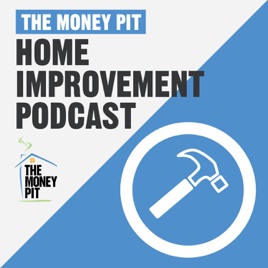
4.3
151
1900
The Money Pit Home Improvement Podcast
Tom Kraeutler & Leslie Segrete

4.6
345
416
Affordable Interior Design by Uploft
Betsy Helmuth

4.8
64
238
Growing Greener
Tom Christopher
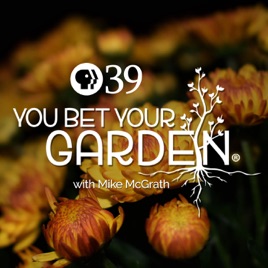
4.5
387
284
You Bet Your Garden
Lehigh Valley Public Media
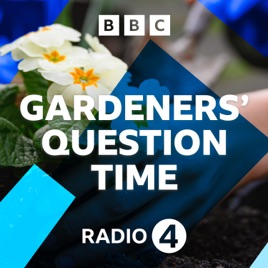
4.7
214
12
Gardeners' Question Time
BBC Radio 4
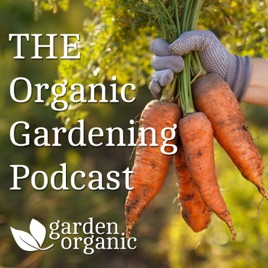
4.7
75
76
The Organic Gardening Podcast
Garden Organic

4.7
44
45
The Simple Garden Life
Simple Garden Life
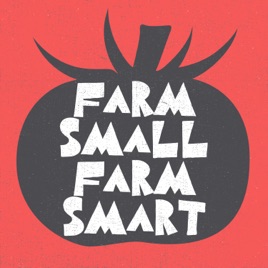
4.7
241
365
Farm Small Farm Smart
The Modern Grower Podcast Network

4.7
93
38
The Art of Homemaking
Nessa Black & Shannon Vantrease



